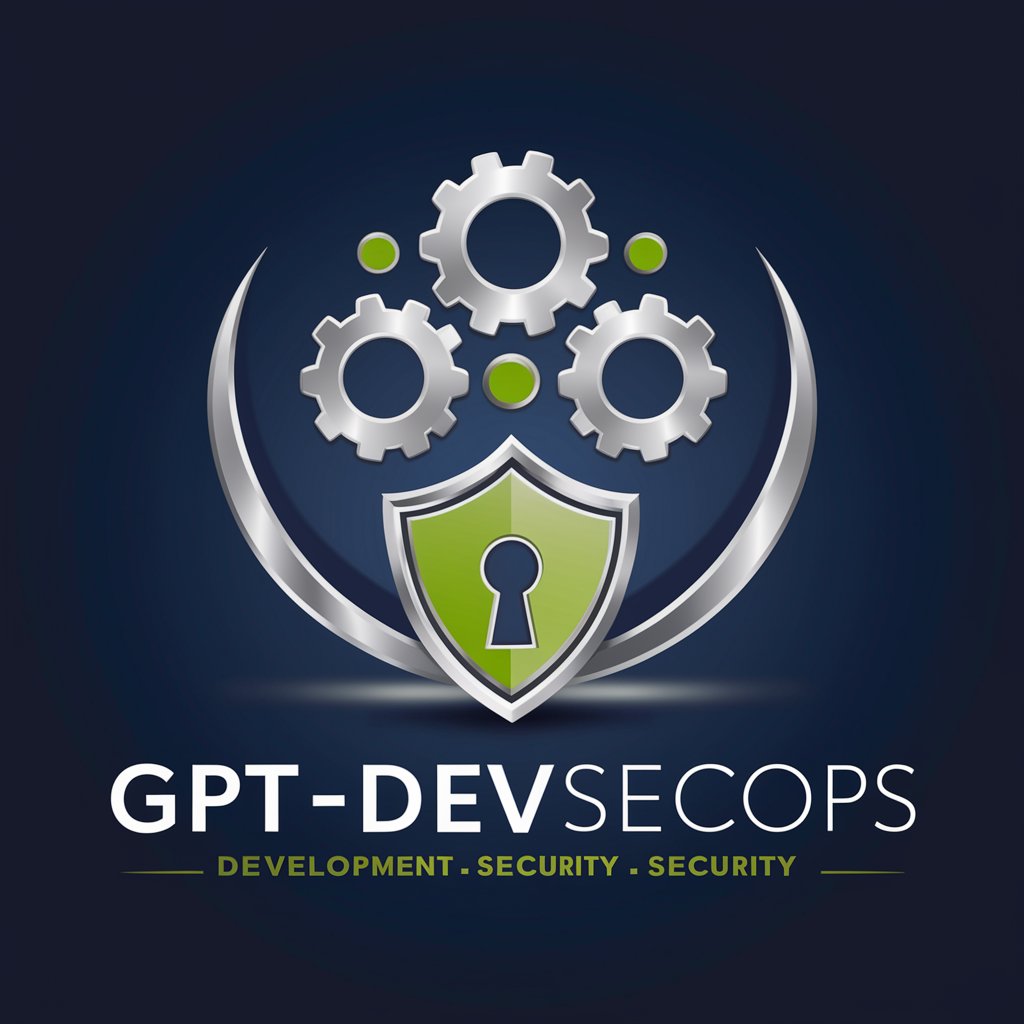DevSecOps - DevSecOps Integration Guide

Welcome! Let's secure your DevOps together.
Automating Security in DevOps
How to implement a CI/CD pipeline with security integrated at every stage?
What are the best practices for automating security in a DevOps environment?
Explain the concept and benefits of a Zero Trust Architecture in DevSecOps.
How can threat modeling be incorporated into the DevSecOps lifecycle?
Get Embed Code
Introduction to DevSecOps
DevSecOps stands for Development, Security, and Operations. It integrates security practices within the DevOps process. DevSecOps involves creating a 'Security as Code' culture with ongoing, flexible collaboration between release engineers and security teams. The design purpose of DevSecOps is to implement security measures and testing in the earliest phases of the development cycle, encouraging all stakeholders to prioritize security. This approach minimizes vulnerabilities, improves business continuity, and reduces the time and cost associated with addressing security issues after a product's release. An example scenario illustrating DevSecOps is the automated scanning for vulnerabilities as code is committed to a version control repository. This ensures that security is integrated into the software development lifecycle (SDLC) from the start, rather than being an afterthought. Powered by ChatGPT-4o。

Main Functions of DevSecOps
Continuous Security Integration
Example
Automated Security Scanning
Scenario
Incorporating automated security tools into the CI/CD pipeline to scan for vulnerabilities in code commits or container images. For instance, integrating a tool like Snyk into a Jenkins pipeline to automatically scan for vulnerabilities whenever new code is pushed.
Infrastructure as Code Security
Example
Terraform with Security Policies
Scenario
Using infrastructure as code tools like Terraform to define and enforce security policies as part of the infrastructure provisioning process. For example, ensuring that no S3 buckets are publicly accessible by default through Terraform scripts.
Compliance Monitoring and Reporting
Example
Compliance as Code with Chef InSpec
Scenario
Automating compliance checks and generating reports using tools like Chef InSpec to ensure that infrastructure configurations meet industry standards and regulations, such as CIS benchmarks or GDPR requirements.
Secrets Management
Example
Integrating HashiCorp Vault
Scenario
Automatically managing, rotating, and accessing secrets throughout the development and deployment process using tools like HashiCorp Vault to prevent secrets leakage and enhance security.
Ideal Users of DevSecOps Services
Software Development Teams
Teams that incorporate DevOps practices but need to integrate security into their SDLC to reduce vulnerabilities and comply with security policies.
Security Professionals
Security analysts and engineers who aim to shift security left, embedding it into the development phase rather than applying it at the end of the cycle.
Operations Teams
Operations personnel focusing on deploying and maintaining secure and compliant infrastructure, who benefit from the automation and integration of security practices.
Compliance Officers
Individuals responsible for ensuring that software products meet regulatory and compliance standards, who can use DevSecOps tools to automate and streamline compliance checks.

Using DevSecOps: A Step-by-Step Guide
Start a Free Trial
Begin by visiting yeschat.ai to access a free trial without the need for login, eliminating the requirement for ChatGPT Plus.
Understand Your Requirements
Identify and document your project's specific security, development, and operational requirements to tailor the DevSecOps tools and practices to your needs.
Integrate Security Tools
Incorporate automated security tools into your CI/CD pipeline for continuous security testing, ensuring vulnerabilities are identified and addressed early in the development process.
Collaborate Across Teams
Foster a culture of collaboration between development, operations, and security teams to ensure security is a shared responsibility and integrated throughout the development lifecycle.
Monitor and Iterate
Continuously monitor your deployment for security threats and compliance, and use feedback to iteratively improve security measures in the development process.
Try other advanced and practical GPTs
Product Inpaint by Mojju
Transform Product Images with AI-Powered Backgrounds

CyberPunk World
Craft Dystopian Worlds with AI

! Entrenador Líder !
AI-Powered Leadership Coaching

Doktor Mitoza
AI-powered Biotechnology Expertise

NeutrinoGold gold market analyst
AI-Powered Gold Market Insight

NutriVision
Empowering your diet with AI

BuffettBot
Invest Smartly with AI-Powered Buffett Wisdom

Love Guru
Empower Your Heart with AI

StarbucksDeals
Your AI-Powered Starbucks Companion

Защита прав потребителей
Your AI-Powered Legal Advisor for Consumer Rights

GodMode GPT
Empowering creativity and analysis with AI

Extreme Home Makeover
Revamp Your Space with AI Precision

DevSecOps: Questions and Answers
What is DevSecOps?
DevSecOps integrates security practices within the DevOps process. It aims to automate core security tasks by embedding security controls and tests early in the development lifecycle.
Why is DevSecOps important?
It ensures security measures are not an afterthought but a fundamental part of the development, deployment, and maintenance process, reducing vulnerabilities and improving code quality.
How does DevSecOps differ from traditional security approaches?
Unlike traditional security approaches that are often reactive and isolated, DevSecOps is proactive, integrated, and continuous, emphasizing collaboration and automation to secure the development lifecycle.
Can DevSecOps be applied to any development environment?
Yes, DevSecOps practices and tools can be adapted to various development environments and workflows, whether cloud-based, on-premises, or hybrid, for applications of all sizes.
What are the key components of a successful DevSecOps implementation?
Key components include continuous integration and delivery (CI/CD) pipelines, automated security testing tools, collaboration between DevOps and security teams, and ongoing monitoring and feedback loops.
